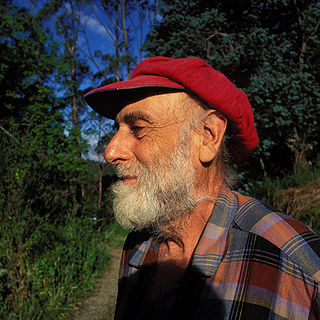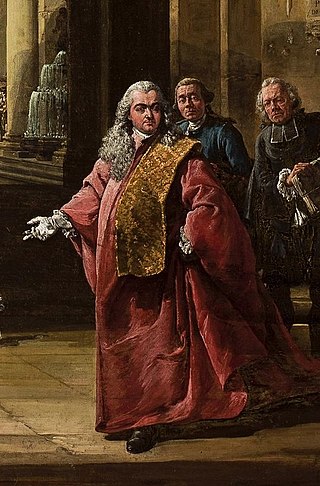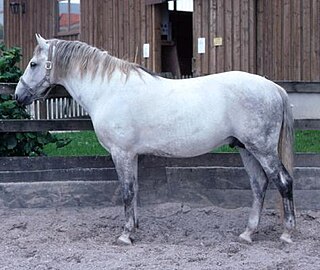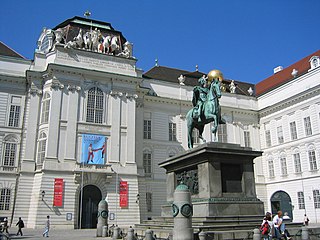| Name | Image | District | Type | Summary |
|---|
| Academy of Fine Arts Vienna |  | Innere Stadt | Art | Features public painting gallery |
| Albertina |  | Innere Stadt | Art | Features prints and drawings, graphic works, photographs and architectural drawings |
| Albertina modern |  | Innere Stadt | Art | Modern Austrian art in Künstlerhaus Wien |
| Alt Wiener Schnapsmuseum | | Hietzing | Beverages | website, history and manufacture of schnapps |
| Architekturzentrum Wien |  | Neubau | Architecture | Architecture and urban design of the 20th and 21st centuries, located in Museumsquartier |
| Arnold Schönberg Center | | | Biography | Life of composer Arnold Schönberg, music culture center |
| Augarten Porcelain Museum |  | Leopoldstadt | Art | website, history of Vienna porcelain and Augarten porcelain |
| Austrian Film Museum | | Innere Stadt | Cinema | website |
| Austrian Museum of Folk Life and Folk Art |  | Josefstadt | Art | website, located in the Schönborn Palace, traditional folk art and culture of Austria and its neighbouring countries |
| Austrian Social and Economic Museum | | Margareten | History | website, economy, business, trade, monetary system |
| Austrian Theatre Museum |  | | Theatre | Theatre history in Austria |
| Bank Austria Kunstforum | | Innere Stadt | Art | website, Austrian art collection of Bank Austria |
| Beethoven Eroicahaus | | Döbling | Biography | Memorial to composer Ludwig van Beethoven's stay in Oberdöbling in the summer of 1803, during which he composed a large part of his Eroica Symphony, operated by the Vienna Museum |
| Beethoven Pasqualatihaus |  | Innere Stadt | Biography | Life in and work of composer Ludwig van Beethoven in Vienna, operated by the Vienna Museum |
| Beethoven Wohnung Heiligenstadt |  | Döbling | Biography | House where composer Ludwig van Beethoven wrote the Heiligenstadt Testament, operated by the Vienna Museum |
| Belvedere |  | Landstraße | Historic house | Include two Baroque palaces, museum of Austrian art from the Middle Ages to the present, gardens |
| Belvedere 21 |  | Landstraße | Art | Austrian art of the twentieth and twenty-first centuries |
| Brennpunkt | | | Technology | information, history of heating and day-to-day life in the city |
| Chimney Sweep Museum | | | Technology | information, history of chimney sweeping |
| Church of the Teutonic Order | | Innere Stadt | Religious | Ecclesiastical artifacts and treasures |
| Demel |  | Innere Stadt | Food | Artifacts and history of the historic Imperial chocolate maker |
| Esperanto Museum |  | Innere Stadt | History | Part of the Austrian National Library, relationship of man to language |
| Design Forum Wien | | Neubau | Art | website, gallery for study of design, located in Museumsquartier |
| Dommuseum |  | Innere Stadt | Art | Sacral works of art from St. Stephen's Cathedral and other churches in Vienna and Lower Austria |
| Emperor Franz Joseph Hat Museum | | | Fashion | website |
| Ephesos Museum |  | Innere Stadt | History | Antiquities from the city of Ephesus in modern-day Turkey, located in a wing of the Hofburg Palace |
| Ernst Fuchs Museum |  | Penzing | Art | website, works by Ernst Fuchs |
| European Coat of Arms Museum | | | History | information, development of coats of arms and heraldry |
| Fantasy Art Museum |  | Innere Stadt | Art | website, works by the Vienna School of Fantastic Realism and by important international artists of fantasy, surreal and visionary art |
| Federal Pathologic-Anatomical Museum Vienna | | | Science | Anatomy and pathology |
| Foltermuseum | | | History | website, history of torture and corporal punishment |
| Funeral Museum Vienna |  | | History | Funerary customs |
| Generali Foundation | | | Art | Works by many international artists, mainly from the 1960s to today |
| Geymüllerschlössel |  | Währing | Decorative arts | Small palace with furniture and decorative art from the Biedermeier period and a clock collection, branch of the Museum of Applied Arts |
| Globe Museum |  | Innere Stadt | History | Part of the Austrian National Library, terrestrial and celestial globes, lunar and planet globes, and instruments related to globes (armillary spheres, planetaria, telluria) |
| Haus der Musik |  | Innere Stadt | Music | History of music |
| Haydnhaus |  | Mariahilf | Biography | Life of composer Joseph Haydn, operated by the Vienna Museum |
| Heeresgeschichtliches Museum |  | Landstraße | Military | Austrian military history from the 16th century to 1945 |
| Hermesvilla |  | Hietzing | Historic house | Imperial castle remodeled by Emperor Franz Joseph I for his wife Empress Elisabeth in the late 19th century, operated by the Vienna Museum |
| Hofburg Palace |  | Innere Stadt | Multiple | Includes the Imperial Apartments, Silver Collection, Sisi Museum, Kunsthistorisches Museum's collections of arms and armour and musical instruments |
| Hofburg Wien: Kaiserappartements |  | Innere Stadt | Historic house | website, located in the Hofburg Palace, rooms used by Emperor Joseph II, includes museum about his wife Sisi and the Imperial Silver Collection |
| Imperial Crypt |  | Innere Stadt | History | Sarcophagi and tombs of the Imperial family, located below the Capuchin Church |
| Imperial Furniture Collection |  | Innere Stadt | Decorative art | Furniture from the 18th to early 20th century, includes the Egyptian room of Empress Maria Ludovica, Biedermeier and Wiener Moderne pieces |
| Jewish Museum Vienna |  | Innere Stadt | History | Jewish history, life and religion in Austria |
| Johann Strauss Wohnung | | Leopoldstadt | Biography | Life of famous waltz composer Johann Strauss II, operated by the Vienna Museum |
| Kunsthalle Wien |  | Neubau | Art | Temporary exhibitions of contemporary international art, located in Museumsquartier |
| KunstHausWien |  | Landstraße | Art | Features works by Friedensreich Hundertwasser and other exhibits |
| Kunsthistorisches Museum |  | Innere Stadt | Art | Includes fine art, Egyptian, Near Eastern, Ancient Greek and Roman antiquities, sculpture and decorative arts, coins |
| Kunstraum Niederoesterreich | | | Art | website, art and project space located in the Palais Niederösterreich |
| Kuffner observatory |  | Ottakring | Science | Astronomy |
| Leopold Museum |  | Neubau | Art | Modern Austrian art including key paintings and drawings by Egon Schiele and Gustav Klimt, located in Museumsquartier |
| Liechtenstein Garden Palace |  | Alsergrund | Art | Pre-booked guided tours of significant collection of European art |
| Lichtenstein City Palace | | | Historic house | Baroque palace under restoration |
| Madame Tussauds Vienna | | | Wax | |
| MAK |  | Innere Stadt | Art | Applied arts and contemporary art |
| MAK Depot of Contemporary Art | | | Art | website, branch of MAK, exhibits of contemporary art |
| Money Museum of the Oesterreichische Nationalbank | | | Numismatic | website, operated by Austria's central bank Oesterreichische Nationalbank, evolution of the monetary system, banknotes, banknote designs, securities and coins |
| Mozarthaus Vienna |  | Innere Stadt | Biography | Life in and work of composer Wolfgang Amadeus Mozart in Vienna, operated by the Vienna Museum |
| MUMOK |  | Museumsquartier | Art | Modern and contemporary art works |
| MUSA (Vienna) | | Innere Stadt | Art | website, City of Vienna's art exhibition space |
| Museum Aspern Essling | | | History | website, history of the 1809 Battle of Aspern-Essling during the Napoleonic Wars |
| Museum of Illusions |  | Innere Stadt | Amusement | website, exhibit featuring optical and spatial illusions |
| museum in progress | | Mariahilf | Art | Specialised on extraordinary contemporary art projects in media and public spaces |
| Museum Judenplatz |  | Innere Stadt | History | Social, cultural and religious life of the Jews of Vienna in the Middle Ages |
| Museum of Art Fakes |  | Landstraße | Art | Forged art |
| Museum of Contraception and Abortion | | | Science | website |
| Museum of Ethnology |  | Innere Stadt | Ethnography | Ethnographic and archaeological objects from Asia, Africa, Oceania, and America |
| Museum of Young Art | | | Art | 21st century art |
| Museum of the History of Medicine | | Alsegrund | Science | website, anatomical and obstetric wax models, operated by the Medical University of Vienna |
| Natural History Museum of Vienna |  | Innere Stadt | Natural history | Displays include geology, paleontology, the animal world from protozoa to insects to highly developed mammals |
| Neidhart Fresken | | Innere Stadt | Art | Medieval secular mural paintings that show scenes from the life and work of the minnesinger Neidhart von Reuental |
| Original Vienna Snowglobe Museum | | Währing | Commodity | website, collection of snowglobes |
| Österreichische Galerie Belvedere |  | Landstraße | Art | Located in the Belvedere, masterpieces from the Middle Ages and Baroque until the 21st century |
| Otto Wagner Hofpavillon Hietzing |  | Hietzing | Transportation | Railway pavilion built for the Emperor and his court, operated by the Vienna Museum |
| Otto Wagner Pavilion Karlsplatz |  | Innere Stadt | Biography | Life and work of Viennese architect Otto Wagner, operated by the Vienna Museum |
| Papyrus Museum |  | Innere Stadt | History | Part of the Austrian National Library, exhibits of papyrus from its collections |
| Peace Museum Vienna | | Innere Stadt | Peace | website, street museum highlighting 150-plus peace heroes in Windows for Peace project, part of the International Network of Museums for Peace |
| Pharmacy and Drugstore Museum Vienna | | Wieden | Science | website, development of the profession and the history of the drugstore |
| Prater Museum | | Leopoldstadt | Amusement | History of Vienna's largest amusement park, the Wurstelprater, operated by the Vienna Museum |
| quartier21 | | Neubau | Art | website, contemporary art and culture gallery, located in Museumsquartier |
| Red Vienna in the Laundry |  | Döbling | History | website, history of the Red Vienna government of Austria from 1919 to 1934, located in the Karl Marx-Hof |
| Römermuseum |  | Innere Stadt | History | History and culture of Ancient Rome in Vienna, operated by the Vienna Museum |
| Schatzkammer |  | Innere Stadt | Art | Part of the Hofburg Palace, features the Kunsthistorisches Museum's collections of royal treasures and religious relics |
| SchokoMuseum | | | Food | website, chocolate |
| Schönbrunn Palace | 125px | Hietzing | Multiple | Includes the Rococo palace, gardens, museum of carriages in the Wagenburg, children's museum |
| Schottenstift Museum | | | Art | Benedictine monastery with major paintings, furniture, tapestries, vestments and liturgical objects and vestments |
| Schubert Geburtshaus |  | Alsergrund | Biography | Birthplace of composer Franz Schubert, operated by the Vienna Museum |
| Schubert Sterbewohnung |  | Wieden | Biography | House where composer Franz Schubert lived until his death, operated by the Vienna Museum |
| Scout Museum | | Mariahilf | Scouting | website, history of the Boy Scouts in Austria |
| Secession Building |  | Innere Stadt | History | Changing exhibits of contemporary art, features the Beethoven Frieze by Gustav Klimt |
| Sigmund Freud Museum |  | Alsergrund | Biography | House, life and work of Sigmund Freud, the founder of psychoanalysis |
| Strauss Museum | | Alsergrund | Biography | Life and work of the Strauss Family Johann I, Johann II, Josef, Eduard and Johann III Strauss. |
| State Hall of the Austrian National Library |  | Innere Stadt | Library | 18th century Baroque library room |
| Technisches Museum Wien |  | Penzing | Science | History of science in industry, including astronomy, physics, mining, iron, steel, energy, communications and media, transportation, music |
| Third Man Museum | | | Media | website, collection of memorabilia related to the 1949 film noir The Third Man , which was filmed in Vienna in 1948 |
| Urania (Vienna) |  | Innere Stadt | Science | Astronomy |
| Uhrenmuseum |  | Innere Stadt | Horology | Clocks, operated by the Vienna Museum |
| Vienna Crime Museum | | Leopoldstadt | Law enforcement | Wiener Kriminalmuseum website, includes the Vienna Police Department Museum, history of judicial and police system and the proceeds from crime by the late Middle Ages to the present |
| Vienna Undertakers Museum | | | History | Bestattungsmuseum Wien website, information, funeral and cemetery items and customs |
| Vienna Museum Karlsplatz |  | Innere Stadt | History | History, art and culture of the city, main location of the Vienna Museum |
| Vienna Observatory |  | Währing | Science | Astronomy |
| Vienna Schuhmuseum | | Josephstadt | Fashion | website, development of shoe-making and orthopedic shoe-making |
| Vienna Transport Museum Remise |  | Landstraße | Transport | website, collection of trams, buses and light rail vehicles, operated by Wiener Linien |
| Viktor Frankl Museum |  | Alsergrund | Insight and education | Opened 26 March 2015. website Viktor E. Frankl was a neurologist and psychiatrist. |
| Wagenburg |  | Hietzing | Transport | Located on the grounds of Schönbrunn Palace, carriages and horse-drawn vehicles and equipment |
| Wiener Werkstätte Museum | | | Decorative arts | website, designs and examples of Wiener Werkstätte furniture and decorative arts |
| ZOOM Kindermuseum | | Neubau | Children's | website, located in Museumsquartier |
|












































































